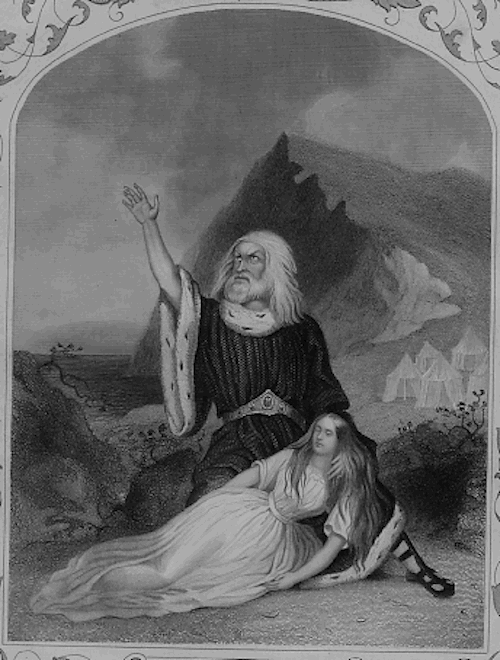

In 1966 I was awarded a Ph. D. from The
University of Birmingham,
in England. My dissertation was called "King Lear in the Theatre: A
Study of the Play Through the Performances of Garrick, Kean, Macready,
Irving, Gielgud, and Scofield."
John Russell Brown: was my supervisor.
Much of the work was written back here in the US at The University of
Michigan, after two years of study at The Shakespeare Institute,
Stratford-upon-Avon, a special division of University of Birmingham.
My
synopsis, as it appears in the original study, is to be found in the
following single paragraph:
This dissertation is first of all a record
of the performances of David Garrick, Edmund Kean, William Charles
Macready, Henry Irving,
and John Gielgud as King Lear. In the case of
John Gielgud, the emphasis is upon his 1950 production, with only seven
and a half double-spaced pages devoted to his final Lear in 1955, which
I believe was only partially successful. It is also a partial record of
the productions in which they appeared. Against the common intentions
of these Lears (with the partial exception of the '55 version of
Gielgud's) is set the Peter Brook production of 1962, with Paul
Scofield as Lear. The entire study begins with the background for and a
synopsis of Nahum Tate's King Lear and an evaluation of its merits for
the Restoration and eighteenth-century theatre. This is followed,
within the same chapter, by a re-examination of the evidence regarding
the restorations of Shakespeare's text to the theatre by George Colman
and David Garrick. Then a discussion of the six Lears follows, chapter
by chapter. There is, of course, a thorough examination of the texts
for each of the productions, with emphasis upon the cuttings and
interpolations, and the impact that these might have upon the
interpretation. Decor and music are considered, whenever details are
available. The actor's interpretation, as far as possible, is set
forward; and his performance is assessed. This necessitates, for the
Gielgud chapter, a review and consideration of the teachings of Harley
Granville-Barker on King Lear. Where relevant, the performances of the
other players are considered; and a summary assessment of the
interpretation and the production is made at the end of each chapter.
The approach to the Scofield chapter is somewhat different, for the
interpretation of the great Polish critic, Jan Kott, and the producer
Peter Brook's execution of that interpretation is the first essential
toward an understanding of the production. Kott's view of the play and
Brook's approach to the production demand special consideration, and
this serves as foil to emphasize the common intentions of earlier
Lears. The final chapter contains two parts: a summary of the findings
from my study of King Lear in the theatre and an analysis of the play
to discover Shakespeare's aim for its impact upon an audience.
The
entire dissertation, including an appendix of dates of performances of
King Lear for the actors under study and also a selected bibliography,
comes to 458 pages.
Surprisingly, the study, now well over fifty years old, still has relevance, because of what it tells us about earlier performances and their impact upon audiences and the new Lear that Peter Brook introduced to the world and where it has taken us. The final chapter, which uses those earlier interpretations (as well as the Brook production) and explores the text for proof of their validity in terms of Shakespeare's intentions, should have enormous influence upon any new production of King Lear. This dissertation has never been published, although Cambridge University Press requested I send them the work, which I did. Unfortunately, the mid-sixties were not the time, they believed, for my argument to be presented to the public. Now, I believe, we are waiting for such a document and I am at work transforming it into a more accessible study for all those who care about King Lear and want to experience it in the theatre as Shakespeare intended.